Hair Transplant in Ukraine
Search and Compare the Best Clinics and Doctors at the Lowest Prices for Hair Transplant in Ukraine
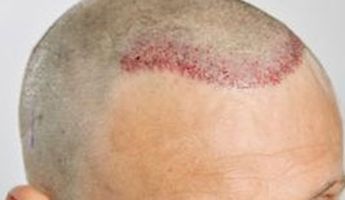
Find the best clinics for Hair Transplant in Ukraine
No pricing info available
Egypt offers the best prices Worldwide
Price: $ 126
Ruben Hair Kiev, located in Kyiv, Kiev, Ukraine offers patients Hair Transplant procedures among its total of 4 available procedures, across 2 different specialties. Currently, there's no pricing information for Hair Transplant procedures at Ruben Hair Kiev, as all prices are available on request only. There are many specialists available at the Hospital, with 4 in total, and they are not accredited by any recognized accreditations institutes
Medical Democracy agency, located in Kyiv, Kiev, Ukraine offers patients Hair Transplant procedures among its total of 42 available procedures, across 12 different specialties. Currently, there's no pricing information for Hair Transplant procedures at Medical Democracy agency, as all prices are available on request only. All procedures and treatments are undertaken by just a small team of specialists, with 2 in total at the Hospital, and they are not accredited by any recognized accreditations institutes
- Home
- Ukraine
Compare Before & After Photos of _procedure_photos.phpHair Transplant
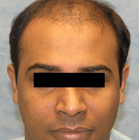
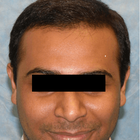
Front view
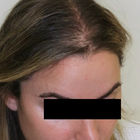
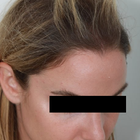
Half-side view
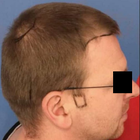
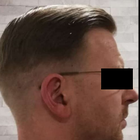
Full-side view
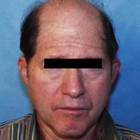
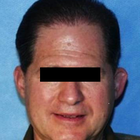
Front view
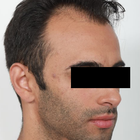
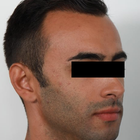
Half-side view
WHY US?
At Medijump, we're making medical easy. You can search, compare, discuss, and book your medical all in one place. We open the door to the best medical providers worldwide, saving you time and energy along the way, and it's all for FREE, no hidden fees, and no price markups guaranteed. So what are you waiting for?

Free

Best Price

Widest Selection

Risk-Free
What you need to know about Hair Transplant in Ukraine

Hair Transplantation, also known as hair restoration surgery, is the surgical process of moving hair follicles from one part of the body that is rich in hair (known as a donor site) and embedding them at the the bald area of the head (recipient site). The medical course of action that aims at addressing hair loss issues and improving aesthetics. While there are many causes of hair loss, the most common reason, especially for men, is genetics. Hereditary hair loss as men age is the number one leading factor of baldness.
It is a minimally invasive procedure, performed under local anesthetic and is most commonly used to treat male baldness, but the technique can also be used to restore eyelashes, eyebrows, beard hair and to fill in scars. The procedure usually lasts between 4 to 8 hours, depending on the number of grafts needed. This procedure is a long-term solution to hair loss, with most patients experiencing significant improvement in hair growth after six months to a year.
Why do people experience hair loss?
We lose an average of 100 hairs a day, however, these hairs are immediately replaced by new hairs growing at the same time. Hair loss can occur suddenly or gradually and it may affect your scalp or your entire body, depending on what’s causing it. Other causes of hair loss may include:
- Stress - a lot of people may experience hair thinning for several months due to a physical or emotional shock. However, this type of hair loss is only temporary.
- Certain Hairstyles and treatments - hairstyles that pull your hair like tight pigtails, ponytails or braids can actually cause traction alopecia. Permanent hair treatments and hot oil treatment may also lead to hair loss; these hair treatments cause inflammation to the hair follicles. If there is scarring, hair loss may be permanent.
- Radiation Therapy - for example, during cancer treatment.
- Certain medical conditions and hormonal changes - in women, hormonal changes due to pregnancy, childbirth menopause or thyroid problems may cause temporary or permanent hair loss. As for medical conditions, hair loss may be due to alopecia, scalp infections like ringworm or a hair-pulling disorder known as trichotillomania.
Sudden hair loss may also be a sign of a specific medical condition that will require treatment. You will need to consult your doctor if you experience more than your usual hair loss whenever you are combing or washing your hair and also if you encounter a sudden patchy loss of hair.
A hair transplant is a common treatment performed on people who are experiencing baldness due to aging and heredity factors. However, if you are completely bald with absolutely no hair left, then this type of treatment may not be applicable for you, as you won't have sufficient donor hair to supply.
What is the cost of Hair Transplant in Ukraine?
The cost of Hair Transplant in Ukraine is typically influenced by various factors. These may include the experience and reputation of the surgeon, the complexity of your case, and the total number of grafts needed. Moreover, the pricing strategy followed by the medical establishment also plays a significant role. Some clinics charge based on the number of grafts transplanted, while others might price the procedure as a package. The exact price can therefore only be determined in consultation with a trusted clinic. While it can appear costly to some, the Hair Transplant is an investment in one's appearance and self-confidence.
What Does The Procedure Involve?
The hair transplant procedure involves taking hair from your Donor Site and transferring it to the area(s) lacking in hair, the Recipient Site, and a local anesthetic will be applied before the procedure begins to limit any discomfort.
There are two main methods used in a hair transplant procedure:
- Follicular Unit Transplantation (FUT) - strips of tissue will be removed from your donor area, these strips will be cut into individual follicular units. Small cuts will be made on your scalp where the follicular unit grafts will be placed. This method is becoming less popular.
- Follicular Unit Extraction (FUE) - individual hair follicles will be directly extracted from your donor area and moved to your recipient site using a specialist microsurgical needle. FUE is now the preferred technique for hair transplants as it will not leave a linear scar at the back of the head.
Procedures are undertaken by a fully qualified technician and usually involve the extraction of around 3,000 grafts, going up to 4,000. Any more, and it will likely require two separate sittings to complete.
How Long Should I Stay in Ukraine for a Hair Transplant Procedure?
Hair transplants are usually performed as an outpatient procedure. Thus, you will be able to go back to your hotel immediately after. Both methods used for Hair Transplant treatments usually take 4-8 hours to complete. With FUE technique, there are no stitches or staples to be removed, so you won't need to stay in Ukraine for long after the procedure, just allow a day or two to be sure before traveling home.
You should expect to pay the clinic another visit the day after the treatment so the doctor can remove the bandage, examine the areas of intake and transplantation of follicles, before washing your hair using a special technique that you will learn to perform by yourself. Finally, the doctor will provide you with a special shampoo that will help to restore the skin.
What's the Recovery Time for Hair Transplant Procedures in Ukraine?
Your scalp will continue to be sensitive to pain for a few days, during which time you should continue to take the medications provided by the doctor. On top of the pain killers and anti-inflammatory meds, you may also be given antibiotics to lessen the risk of infection, as uncommon as this may be.
You should expect to return to work and your daily routine, including exercise, after 5 days. However, the signs of a hair transplant will remain for at least another 2-3 weeks, at which point the newly transplanted hairs will start to fall out - but don't be alarmed! This is to be expected as you've just had a follicle extraction, so dead hair will simply make way for new hair over the coming weeks and months.
If the average person's hair only grows at a centimeter per month, then it will take some time before you can wear your hair long again. You could expect to display short and consistent hair just 4-6 weeks after the treatment.
What sort of Aftercare is Required for Hair Transplant Procedures in Ukraine?
After the procedure is complete, anti-swelling medication and painkillers will be available and you'll be provided with various essentials to see you through the days immediately following. Post-op items may include; specialist shampoo, lotion, multivitamins, a special hat, a headband, neck pillow, and wound dressing.
Having already been provided with your post-op aftercare products, you may also be offered Platelet Rich Plasma (PRP) Therapy to help stimulate the hair follicles and encourage hair growth. This is where a small amount of blood is taken, rich in plasma, which is then injected into the Recipient Site.
What's the Success Rate of Hair Transplant Procedures in Ukraine?
The success rate for hair transplants is one of the highest, at 98% and is considered the only truly effective remedy for hair loss.
The effectiveness of Hair Transplant treatments is significantly shaped by the surgeon's expertise who executes the process. A seasoned and competent surgeon employs sophisticated methods to prevent harm to the transplanted hair follicles during the process, which leads to a higher likelihood of success. Additionally, the ability of the surgeon to place the grafts in an attractive manner that resembles natural hair growth further enhances the perceived successfulness of the result.
Beyond the competency of the surgeon, the overall health status and lifestyle choices of the patient greatly impact the treatment's effectiveness. Subpar habits such as excessive smoking and alcohol intake can obstruct the recovery process and influence the result adversely. Illnesses like diabetes can also interfere with the likelihood of success.
Consideration of the donor hair's quality is another aspect that may affect the success of the procedure. Generally, those with robust, plentiful hair in the donor region have a higher success rate as compared to individuals with sparse or poor-quality hair. The availability of more follicles for transplantation yields better results. A detailed examination is carried out before the Hair Transplant to verify the quantity and quality of the donor's hair.
Are there Alternatives to a Hair Transplant?
Laser therapy is one alternative to a hair transplant. During this procedure, a low-level laser device will be used as a treatment for a hair loss specifically caused by genetics. This low-level laser with a wavelength of 650 nanometres can actually stimulate your hair growth. However, long term effects for this type of alternative still remains uncertain.
PRP Therapy is another alternative you can consider. This type of treatment will make use of your own blood to promote hair growth. Your blood will be spun in a centrifuge to separate your blood’s plasma component from your red and white blood cells. Plasma contains many growth factors that promote hair growth when injected into the scalp.
Other non-surgical alternatives could include simply shaving all your hair off, trying other hairstyles or using a wig or hairpiece.
How do FUT and FUE Compare?
The two most common techniques used are the Follicular Unit Transplant (FUT) and the Follicular Unit Extraction (FUE). How do they compare?
1. FUT, also referred to as FUSS (Follicular Unit Strip Surgery), involves the removal of a strip of skin from the back of the head containing lots of hair follicles, which is stitched up and hidden by the surrounding hair. Then the strip of follicles is divided into 500-2,000 tiny grafts containing just a few hairs. These are then embedded across the bald area of the head.
2. FUE does not require a strip of skin to be removed, instead, the hair follicles are individually removed from the donor site and positioned across the bald area in tiny slits created by a scalpel or needle.
What are the Risks Associated with Hair Transplant?
Like any surgical procedure, Hair Transplant carries certain risks, although they are relatively rare and usually minor if performed by a skilled and experienced surgeon.
Some potential risks and side effects could include:
- Scarring is the most common side effect (only applicable to FUT)
- Infections
- Temporary loss of sensation around the surgical sites
- Inflammation of hair follicles (folliculitis)
- Temporary scalp pain, itching, and swelling.
- Unnatural-looking hair growth
Whilst the information presented here has been accurately sourced and verified by a medical professional for its accuracy, it is still advised to consult with your doctor before pursuing a medical treatment at one of the listed medical providers
No Time?
Tell us what you're looking for and we'll reachout to the top clinics all at once
Enquire Now

Popular Procedures in Ukraine
Prices Start From $153

Prices Start From $500

Prices Start From $4

Prices Start From $500

Recommended Medical Centers in Ukraine for Hair Transplant

- Interpreter services
- Translation service
- Religious facilities
- Medical records transfer
- Medical travel insurance
- Health insurance coordination
- TV in the room
- Safe in the room
- Phone in the room
- Private rooms for patients available

- Interpreter services
- Translation service
- Religious facilities
- Medical records transfer
- Medical travel insurance
- Health insurance coordination
- TV in the room
- Safe in the room
- Phone in the room
- Private rooms for patients available

- Interpreter services
- Translation service
- Religious facilities
- Medical records transfer
- Medical travel insurance
- Health insurance coordination
- TV in the room
- Safe in the room
- Phone in the room
- Private rooms for patients available

- Interpreter services
- Translation service
- Religious facilities
- Medical records transfer
- Medical travel insurance
- Health insurance coordination
- TV in the room
- Safe in the room
- Phone in the room
- Private rooms for patients available

- Interpreter services
- Translation service
- Religious facilities
- Medical records transfer
- Medical travel insurance
- Health insurance coordination
- TV in the room
- Safe in the room
- Phone in the room
- Private rooms for patients available
Hair Transplant in and around Ukraine
About Ukraine
Ukraine offers a favorable cost of living, which may be a strong draw for why one should consider exploring it. In particular, its capital city of Kiev ranks high among the list of economical European capitals. This affordability impacts various aspects from food, drinks to sightseeing, transport, and accommodations, making it a great option for budget-conscious travelers.
An added intrigue of Ukraine, specifically Kiev, is in how its affordable rates do not compromise the quality of the experience. Rather, it enhances the encounter as it leaves room to sample more of what the city has to offer. Amidst the cost-effectiveness, the country still presents a rich collection of attractions that are worthwhile. These span from convenient transport systems, diverse culinary options, alluring sightseeing spots to suitable lodging facilities. So, not only do you get to save money, but you also extravagant value while navigating through this remarkable city.
Ukraine is a growing magnet for health tourists, with a rise in individuals journeying for Hair Transplant services. The option to access private dental care, cosmetic procedures, and a diverse range of medical treatments at a fraction of what they would cost in one's home country makes it incredibly appealing. Further, the absence of extensive waiting lists is another attractive feature.
Added to these, Ukraine's reputation is rapidly gaining traction on the international front as a premier hub for laser eye surgery. The country is carving an image for itself as a pioneer in eye care, offering innovative and state-of-the-art laser vision correction techniques. Thus, the country isn’t just a destination for affordable services, but also for quality specialized treatments at the forefront of modern medical technology.
Popular Parts of Ukraine
Boasting a diverse populace of approximately 42.5 million residents, Ukraine stands as an expansive and multicultural nation that happens to be the biggest geographically within Europe’s borders. The country's lush forests create the feeling of an unspoiled, yet to be unveiled paradise. The breathtaking landscape combined with the stunning architectural feats create aesthetically pleasing vistas, which are a key part of Ukraine’s appeal.
- Kiev or Kyiv is the capital of Ukraine. It is one of the oldest cities in Eastern Europe, dating back to the 5th century. The city is steeped in history with cathedrals and golden churches. Kiev is now embodied by urban art and cafes.
- Lviv is a picturesque city full of charming art nouveau architecture and interiors, cozy cafes, and squares and is known as the city of art. Lviv’s historic center is listed in UNESCO World Heritage.
- Carpathian Mountain is the gem of Ukraine. This territory is brimming with natural beauty. Tourists are attracted by its thick forests, meadows, rural shepherds, and of course the incredible mountain lakes. There are many outdoor activities that tourists can do such as hiking, riding, skiing, and cycling.
- Odesa is the perfect summer getaway. It’s known for an affordable summer destination, with wide sandy beaches. The city is also home to the biggest harbor on the Black Sea. Odesa is famous for its Potemkin Steps and fantastic buildings.
- Ivano-Frankivsk is sometimes called “little Lviv.” With its beautiful architecture and sophisticated restaurants, exploring Ivano-Frankivsk is an amazing experience. For many people, the city is the base for exploring the Carpathian Mountains.
It's important to consider that travel advisories from authorities such as the UK Foreign and Commonwealth Office advise against traveling to regions like Crimea, Donetsk, and Lugansk. As a traveler, it's crucial to stay updated on such notifications and follow relevant guidance from your respective government before planning a journey. Ensure you are well-informed about local situations and regulations to ensure your safety and security while traveling.
Weather and Climate in Ukraine
Ukraine predominantly experiences a moderate climate, with an intriguing exception. The southern coastline of Crimea stands out with its delightful subtropical weather. This distinct climate pattern adds to the region's charm, making it distinct from the broader Ukrainian weather trends.
Ukraine's summers tend to kick off in June and extend until September. During this period, temperatures fluctuate within the range of 19 – 25 °C, underlining agreeable weather conditions. The days are typically long, sunny, and warm, sporadically met with occasional rain showers. With such favorable weather, it comes as no surprise that summer is the peak of tourist activity in Ukraine.
Transitional seasons - spring and autumn - are characterized by mild temperatures. However, they are also the seasons with the most rainfall. Spring, in particular, brings a colorful impact on Ukraine's cities with blossoming plants painting a vibrant landscape.
Winter, on the other hand, introduces a colder climate with notable snowfall, particularly in the northeastern regions. The average temperature ranges from 5 to -3 °C during this time, creating a winter wonderland that contrasts to the warm and vibrant seasons.
Getting Around in Ukraine
Boryspil International Airport is the largest airport in Ukraine. Located 29km east of Kyiv, the airport serves domestic flights and has international connections with major cities in Europe and a few cities in Asia. Boryspil International Airport is the hub for Ukraine International Airlines and serves several budget airlines including Lauda, Ryanair, and SkyUp airlines. There are two other airports that serve international and domestic flights: Lviv Danylo Halytskyi International Airport and Odessa International Airport.
Tourists can take a taxi, bus, or shuttle bus to get to the city center. Airport taxis use meters and are comfortable. Some taxis even accept payment by credit cards. Buses are also a great option to get to the city center, Sky Bus takes tourists from Boryspil International Airport to Kyiv and departs from Terminal D and Terminal B. Sky Bus should cost around 60 UAH or 100 UAH depending on the destination.
To visit different cities, domestic flights are inexpensive and will speed up long distance journeys. The fastest way to get around big cities is the minibusses or subway (known as Metro). Minibusses follow routes that the regular bus travels on. Tourists can flag minibusses and ask them to stop at other places that are not the specified bus stops. The fare is fixed no matter how far your destination is.
Taxis are easily available in big cities. Most taxis don’t use a meter but taxi drivers usually don’t cheat. A long trip in Kyiv usually cost around 70 UAH. Shortstops start from 15 to 20 UAH. Tourists can also order a taxi by phone, although most taxi operators do not speak English. Locals usually are happy to help order a taxi for tourists.
Driving in Ukraine by car or motorcycle is another option to explore the country, but the roads are bad and the signs are written in Ukrainian (Cyrillic alphabet) only. Road policeman is one of the biggest disadvantages as they usually request a small bribe when they stop tourists.
Tourist Visas in Ukraine
Individuals hailing from countries like the European Union, Canada, and the United States, among others, enjoy the liberty of staying in Ukraine visa-free for a span of up to 90 days. However, citizens of certain other nations like China, India, and Thailand are required to secure a visa prior to setting foot in the country. To defend against any potential misunderstanding or complications, it is wise to verify visa obligations and specifics from the Ministry of Foreign Affairs of Ukraine's website before planning a trip.
Certain provisions are in place for tourists that allow visa-on-arrival options at major airports and seaports. In addition, an e-Visa system is operational for citizens from 52 designated countries, rendering the process more streamlined. It is mandatory for all visitors to possess a passport that remains valid for a minimum of 3 months beyond the expected date of exit from Ukraine. Moreover, this passport should have at least two pages that are devoid of any visas, marks, or stamps. These regulations ensure a smooth immigration process, avoiding any potential complications during travel.
Additional Information about Visas:
- The e-Visa application process is simple and straightforward, and it can be completed online in a minute.
- Citizens of some countries may also need to provide additional documentation, such as a proof of onward travel or a letter of invitation, when applying for an e-Visa.
- Visa-on-arrival is available for citizens of some countries at major airports and seaports in Ukraine, but it is important to note that visa-on-arrival is not guaranteed and may be subject to additional requirements.
Additional Information
- Local Currency: The official currency of Ukraine is the hryvnia (UAH). 1 USD is equivalent to 36.72 UAH.
- Money & Payments: ATMs are available even in small towns. Currency exchange points are very common in cities. Most shops and restaurants accept credit cards but many places are cash only. Tipping in Ukraine is common, but not obligatory.
- Local Language: Ukrainian is the official language. Romanian, Polish, Hungarian, Belarusian, and Russian are widely spoken. Ukrainians either speak native Ukrainian or Russian. Most people in tourist areas speak English very well.
- Local Culture and Religion: Religion in Ukraine is very diverse with most of the population following Orthodox Christianity. Judaism, Buddhism, Paganism, and Hinduism are in the minority.
- Public Holidays: Ukraine celebrates major Orthodox holy days as well as Victory Day, Constitution Day, and Independence Day. If a festive or non-working day falls on Saturday and Sunday, the holiday will be postponed to the next working day.
Popular Searches
- Plastic Surgery in Thailand
- Dental Implants in Thailand
- Hair Transplant in Thailand
- Breast Augmentation Thailand
- Gastric Sleeve in Thailand
- Gender Reassignment Surgery in Thailand
- Laser Hair Removal in Bangkok
- Botox in Bangkok
- Dermatology in Bangkok
- Breast Augmentation in Bangkok
- Coolsculpting in Bangkok
- Veneers in Turkey
- Hair Transplant in Turkey
- Rhinoplasty in Turkey
- Stem Cell Therapy in Mexico
- Rhinoplasty in Mexico
- Liposuction in Mexico
- Coolsculpting in Tijuana
- Rhinoplasty in Korea
- Scar Removal in Korea
- Gastric Sleeve in Turkey
- Bone Marrow Transplant in India
- Invisalign in Malaysia
- Plastic Surgery in the Dominican Republic
- Tummy Tuck in the Dominican Republic
- Plastic and Cosmetic Surgery in Poland
- Rhinoplasty in Poland
- Hair Implant in Poland
- Dental Implants in Poland
- IVF in Turkey
